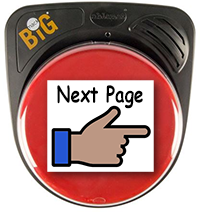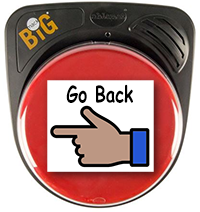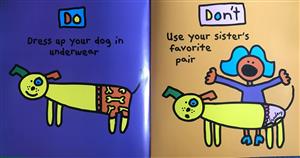-



TOPIC INDEX
- Introduction
- Types of Talking Switches - Single Messages
- Types of Talking Switches - Sequenced Messages
- Creating and Using Social Scripts with Sequenced Talking Switches
- Using Talking Switches to Access Toys and Appliances for Fun and Motivating Communication
- Literacy Activities using Talking Switches
- Other Talking Switch Resources
LITERACY ACTIVITIES USING TALKING SWITCHES
Used to their full potential, talking switches are a powerful tool to increase engagement, participation, and learning during literacy activities. Not only can children participate in choral reading with peers when saying a repeating line in a storybook, but they can also use talking switches to take turns reading a book as well as to give directions ("turn the page"), to comment ("Look at that!"), to pretend ("little pig, little pig, let me in!"), and more!
It's important to keep in mind the purpose of using the talking switch, and even better for the student to know the purpose. For example, instead of telling a student to "hit the switch," we might encourage them tell us what to do now ("TURN the page"). Whenever possible, use a symbol with text on the cover to encourage literacy and communication learning.
Strategies that work - use single-message talking switches during literacy actvities to:Direct others to turn the page
Pretend by recording animal sounds, vehicle noises, musical notes
Participate with peers, speak a repeating line in the book
Children's Books with Repeated Lines and Themes
AAC Intervention - Books with Repeated Lines
QIAT Listserv Bibliography of Books with Repeated Lines
Many books have themes that repeat and provide multiple opportunities for children to comment using a talking switch. For example, the playful Underwear Do's and Don't Book by Todd Parr provides countless, opportunities for silly commenting with authentic exclamations such as "Uh-oh!, "Oh No," and "Yuck!"


Using Sequenced Talking Switches During Book Reading
Use sequenced talking switches while reading a book to:- Record every other page so that you can read a page, then the child can take a turn reading a page.
- Record a variety of "sounds" that go along with the book, such as animal sounds and vehicle effects, that the child can generate while reading the book - this is really fun!
- Record a poem for the child to recite. Caroline Musselwhite provided this resource on reading, writing, and performing poetry.




